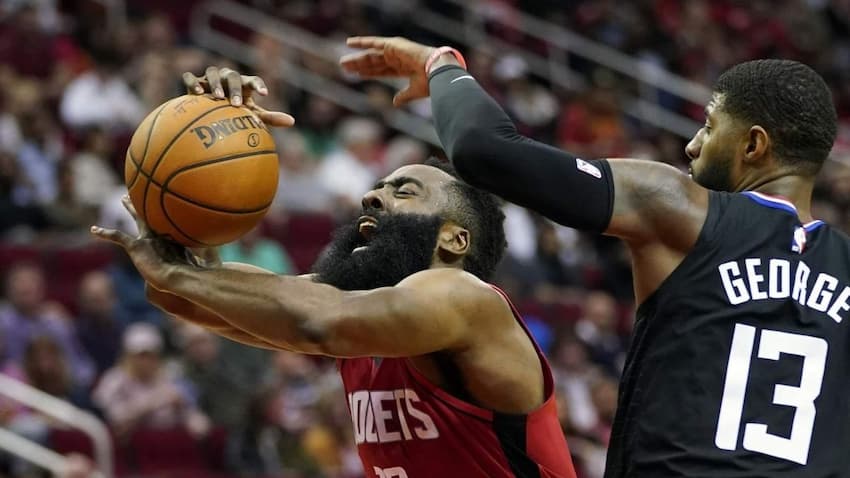Team Fouls And Personal Fouls In Basketball. Many of us get the fouling system in basketball wrong, and it can be confusing at times as to what constitutes Team Fouls or Personal Fouls In Basketball.
What is the distinction between Team Fouls And Personal Fouls In Basketball? The way the two kinds of fouls are counted during such a game is what distinguishes them. A personal foul is any penalty that violates the rules of the game. This foul will be got to add to the player’s and team’s total fouls. A team foul is the sum of each player’s fouls; the total of each player’s fouls equals the number of team fouls.
Are all fouls considered team fouls in basketball? Personal Fouls In Basketball include flagrant and technical fouls. We’ll look at the different types of fouls, as well as what creates a foul and when a team is in a position to shoot free throws.
Examples of Personal Fouls vs Team Fouls

Personal Fouls In Basketball
Personal fouls, technical fouls, and flagrant fouls are the 3 kinds of fouls in basketball. A game delay is also regarded as a personal foul and interfering with play. These are all different types of violations that are introduced to team fouls; more on that later.
A personal foul is a rule violation that simply means there was unnecessary interaction between the player with the ball. Push, block, hit, hold, illegal screen, and essentially anything else that violates basketball rules. An offensive foul also counts as a personal foul.
In the NBA, players are only allowed 5 fouls; if they accumulate 6 fouls, they are fouled out. They must exit the game as well as sit on the bench because they are unable to return. Players in high school and college are enabled 5 fouls before even being fouled.
A flagrant foul is defined as too much contact with a player with the ball, whether intentional or unintentional. A flagrant 1 is considered unnecessary contact, whereas a fragrant 2 is considered excessive contact, resulting in the player’s ejection. They must leave the game and the court; they are not permitted to sit on the bench.
A typical case of a flagrant foul is when the player with the ball goes to make a layup and the defender tries to block him and misses whilst also hitting the player in the head. This would be considered a flagrant 1. If the player swipes as hard as he can to block the player but appears to be attempting to take off his head, this is considered flagrant 2 and results in ejection.
Team Fouls In Basketball
So, now that we understand what personal fouls mean and how many a player can obtain during a game, we can calculate team fouls, which is actually quite simple. As an example, assume we are about to perform a basketball game.
The ball has already been tipped off at the start of the game. Our opponents win the tip and also have possession of the ball, while we play defense. I foul a player while attempting to steal the ball as he tries to dribble around me.
My first foul is called when the referee blows the whistle. I had one team foul and one personal foul. Every foul a player receives is got to add to the team foul total. The team onsides the ball, and you foul a player attempting a layup.
We are now on the same team, and you have one personal foul while I have one personal foul. The total number of team fouls is now two. It’s simple: at the end of the quarter, I might have two fouls, while you might have three and no one else on our team has any. The total number of fouls committed by the team is five. I know it’s simple.
Personal fouls don’t really count toward a team foul unless they are offensive fouls.
When do Team Fouls revert to zero?

Personal fouls do not reset; they remain with the player for the duration of the game at all levels of basketball. Team fouls are reset depending on the level of basketball and the league. The NBA, NCAA, and FIBA international basketball all have their own set of rules and foul systems.
- NBA – After each quarter, team fouls are reset.
- NCAA College Basketball – High school and college basketball follow the same rules, and both levels of play restart at halftime.
- FIBA – Similar to the NBA, team fouls are restarted at the end of each quarter.
- Again, all personal fouls remain with the players and are not transferred.
Fun Fact:
Which team has the most fouls in a game?
On April 9, 1990, the Utah Jazz faced the Phoenix Suns and managed to have the whistle blown against them 52 times, the most in NBA history for a single game.
Who is the fastest to foul out of a game?
Bubba Wells established the record for fouling out of a match in the shortest amount of time possible, 3 minutes, on December 29, 1997. To his defense, he was placed in the game to foul a player, similar to how teams will use the hack-a-Shaq strategy.

